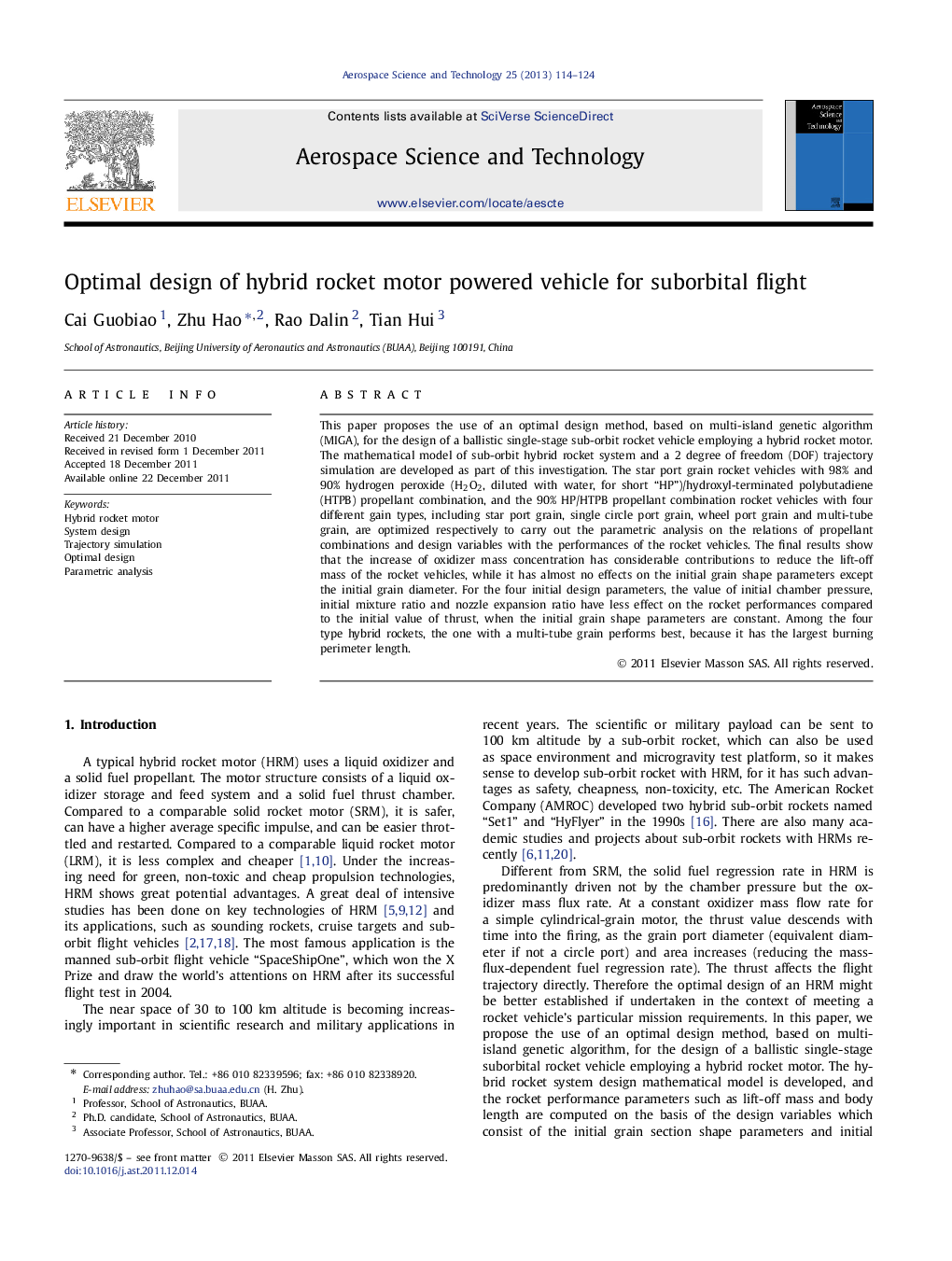| Article ID | Journal | Published Year | Pages | File Type |
|---|---|---|---|---|
| 1718234 | Aerospace Science and Technology | 2013 | 11 Pages |
This paper proposes the use of an optimal design method, based on multi-island genetic algorithm (MIGA), for the design of a ballistic single-stage sub-orbit rocket vehicle employing a hybrid rocket motor. The mathematical model of sub-orbit hybrid rocket system and a 2 degree of freedom (DOF) trajectory simulation are developed as part of this investigation. The star port grain rocket vehicles with 98% and 90% hydrogen peroxide (H2O2, diluted with water, for short “HP”)/hydroxyl-terminated polybutadiene (HTPB) propellant combination, and the 90% HP/HTPB propellant combination rocket vehicles with four different gain types, including star port grain, single circle port grain, wheel port grain and multi-tube grain, are optimized respectively to carry out the parametric analysis on the relations of propellant combinations and design variables with the performances of the rocket vehicles. The final results show that the increase of oxidizer mass concentration has considerable contributions to reduce the lift-off mass of the rocket vehicles, while it has almost no effects on the initial grain shape parameters except the initial grain diameter. For the four initial design parameters, the value of initial chamber pressure, initial mixture ratio and nozzle expansion ratio have less effect on the rocket performances compared to the initial value of thrust, when the initial grain shape parameters are constant. Among the four type hybrid rockets, the one with a multi-tube grain performs best, because it has the largest burning perimeter length.
